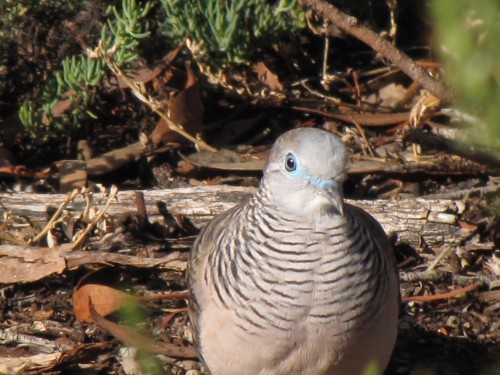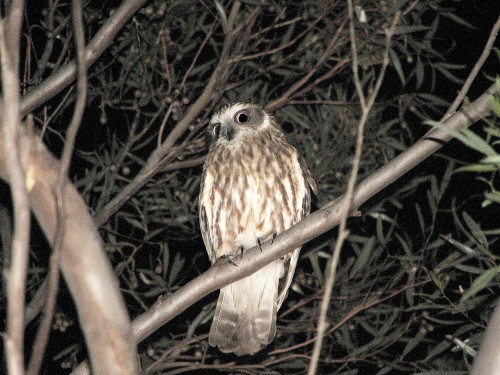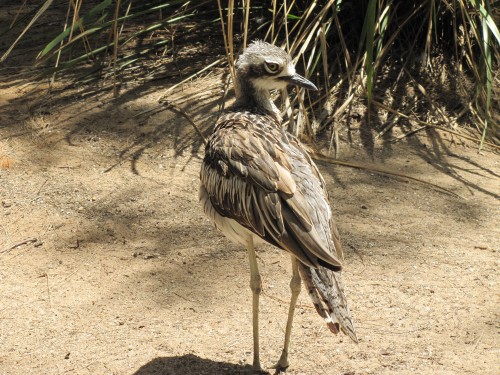Learn to recognise bird calls
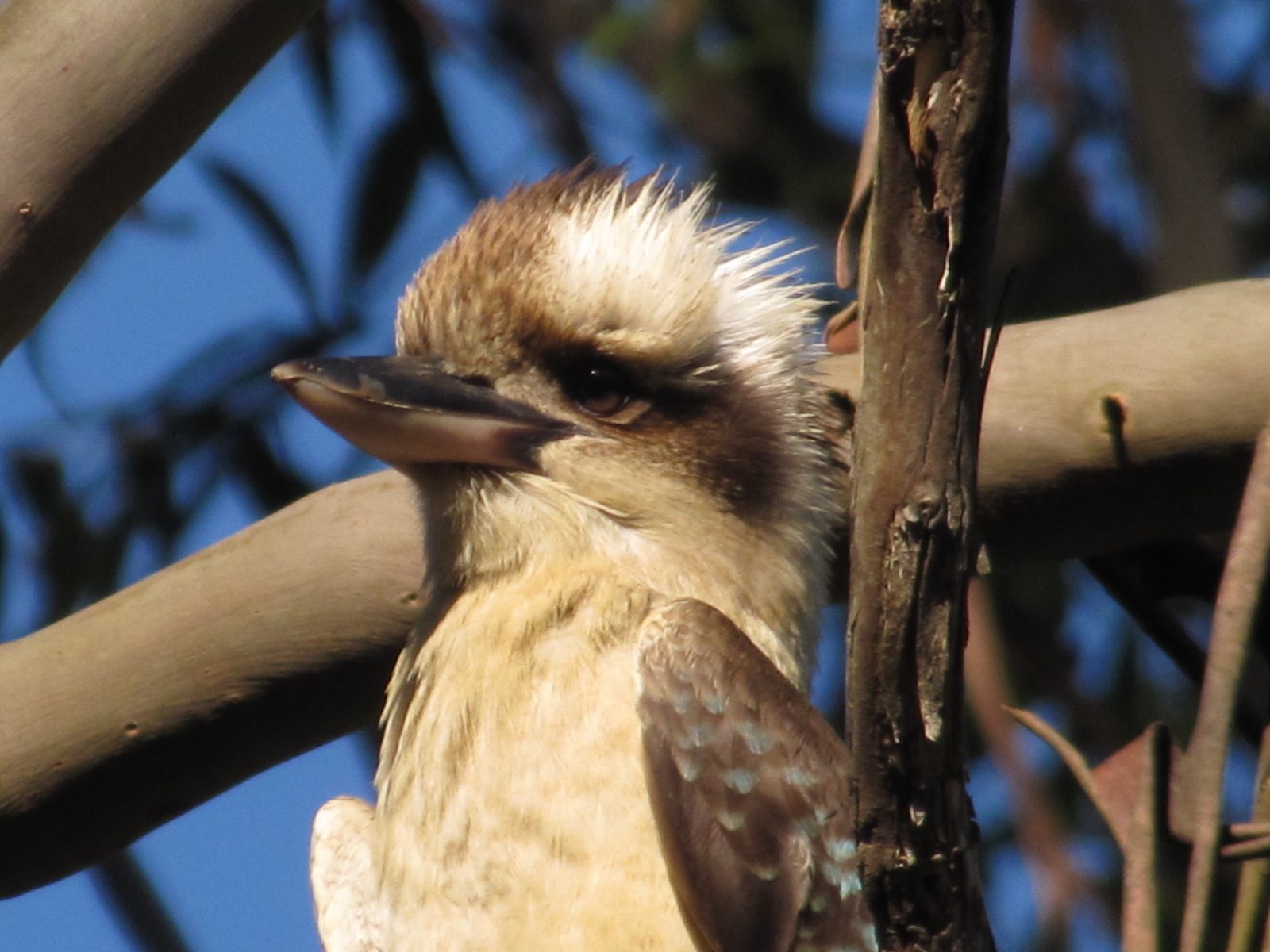
On my writing blog, I recently wrote about the wonderful sounds in the morning when lingering in bed. This article is something of a homage to the calls of birds which can be experienced early in the morning. I am particularly blessed because I live on the outskirts of a town of Murray Bridge in South Australia. I also have fond memories of camping years ago when the birdlife was up close and the dawn chorus was an interesting challenge when trying to identify birds, especially in unfamiliar areas.
Bird environment
I live on a five-acre block of land which has many trees and shrubs and bushes. My surrounding environment is a good place for birds and I have recorded over 100 bird species in the 35 years I have lived here. Many times I have been alerted to something unusual in the garden just by a call which is different.
Bird calls
My advice would be to anyone interested in honing their birding skills is to learn the calls and songs of the common birds in your area. There are apps you can get for your phone which can help you in memorising and identifying birds and I strongly recommend that you get one. I use Morcomb’s Birds of Australia app on my Android phone. There is also an Apple version. This app not only gives the calls of all of our birds, but it also gives detailed notes on behaviour, nesting, distribution and much more information as well. The illustrations should also help in identifying the birds you are seeing.
Birds in Backyards
Birdlife Australia also has a portal called Birds in Backyards which includes a great deal of information to help identify out birds. It also includes MP3 files of bird calls.
Good birding – and happy listening.
Trevor
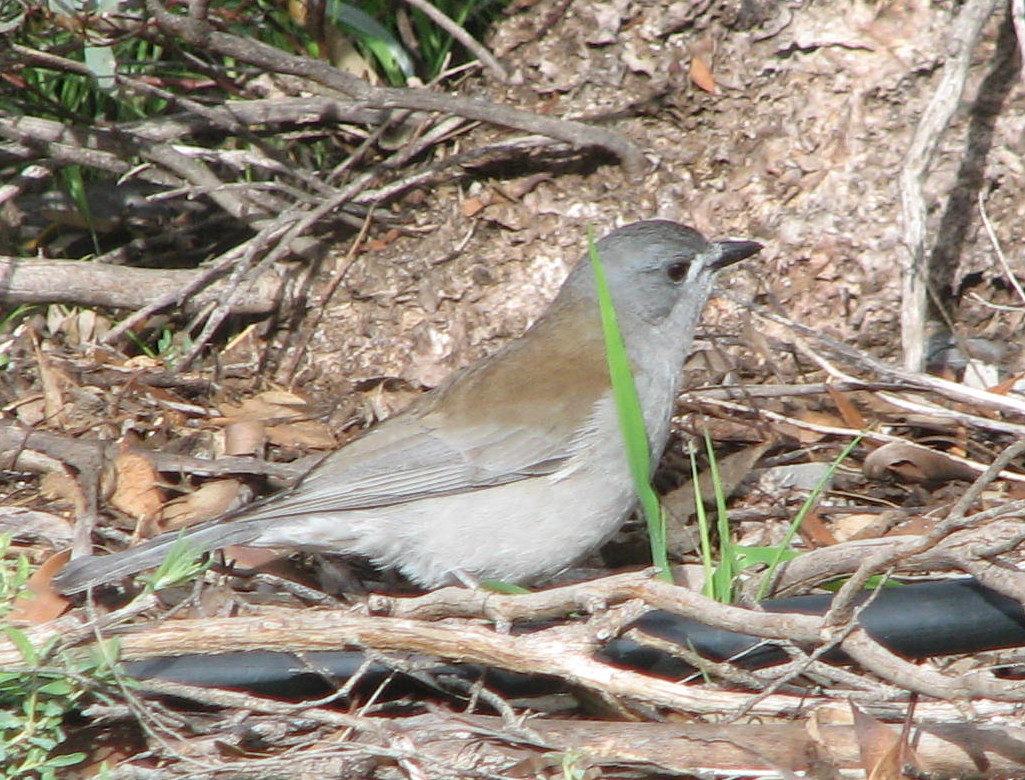
A not so Peaceful Dove
We love hearing and seeing Peaceful Doves in our garden here in Murray Bridge, South Australia. For many years this only happened occasionally, every month or so and only for a brief visit. That has changed in the last month and we see and hear them daily.
Although they are widespread throughout much of the agricultural lands of our state they are not present in large numbers anywhere. When two decided to take up residence in our garden and its adjacent patch of mallee scrub we were delighted. They often called several times a day and sometimes even came close to where we often have a cuppa or a meal on our back veranda. Several weeks ago my wife noticed these two birds mating, so I assumed that they would be soon making a nest in our scrub.
So far I have been unable to locate a nest, and knowing how skimpy the nests of pigeons and doves can be I am not surprised. On one occasion some years ago I stood underneath the nest of a Bronzewing Pigeon and counted how many eggs were in it. Just a few thin sticks thrown together almost randomly seems to be adequate for this group of birds. How the eggs stay in the nest is beyond me – and how the young stay in the nest without destroying their home is amazing.
The Peaceful Dove pair in our garden are hanging around so I am assuming they have made a nest and are sitting on eggs. One of the birds stays quite close to the house and continually calls throughout the day. Now – I love hearing the soft call of this species – don’t get me wrong. But when it goes on calling hour after hour throughout the day it gets a bit much. It is then that this beautiful little dove becomes far from peaceful.
A special call in the night
A few night ago we were suddenly aware of the familiar call of a Southern Boobook owl quite close to our house. I only took a few moments to locate it in the large tree next to our clothes line. I didn’t bother getting out the camera to get some photos because the last time I saw one in our garden I got the photo shown above. It is quite possibly the same bird.
It has been some time since we heard a Boobook in our garden; usually we have the television going at night and that tends to drown out the night sounds. On this occasion we had both been working on cleaning out the office, so the television was off. Perhaps we should do that more often!
Much to our delight we heard it calling again the following night. It would be lovely to be able to call it a resident bird present nearly every night, instead of just an occasional visitor every few years. It is quite welcome to move in and can have all the mice it can catch while it stays.
Further reading:
Bush Stone-curlew, Adelaide Zoo
One of the more interesting birds on display in the Adelaide Zoo here in South Australia is this Bush Stone-curlew.
Standing just over half a metre in height it is an imposing bird. This individual wanders around an open enclosure with Pelicans, a variety of ducks and some Cape Barren Geese. I am assuming it has had its wings clipped to keep it from flying off.
Although this species is widespread throughout a large range across Australia, I have yet to see this bird in its natural environment. It is mainly active at night and most observers’ encounters with the species would be only hearing its haunting, far-reaching “weer-loo” call at night.
Spring is on the way – and so are the cuckoos
Earlier this week I was sitting on our back veranda doing some reading – and enjoying the lovely sunshine. After many weeks of gloomy, drizzling weather it was wonderful to soak up some warmth.
My reading was suddenly interrupted by the distinctive call of a Horsfield’s Bronze-cuckoo. I looked up and saw this bird perched near the top of a nearby mallee tree. (The branches are dead because they have been ring-barked and subsequently killed by two Galahs chewing the bark.)
I raced inside for the camera and managed a few reasonable photos before it flew off, probably looking for an unsuspecting host to care for its eggs and young. Like most cuckoos in Australia (and elsewhere), this species is parasitic, meaning that they lay their eggs in the nests of other species. Around our garden this probably means the nest of a thornbill.
The unsuspecting host pair hatch the cuckoo’s egg and then feed the young cuckoo. The young cuckoo will even tip the other young birds out of the nest – and thus get all of the food.
Since hearing this bird I’ve heard others in the district, so the spring/summer breeding season is definitely on the way.
Related articles:
